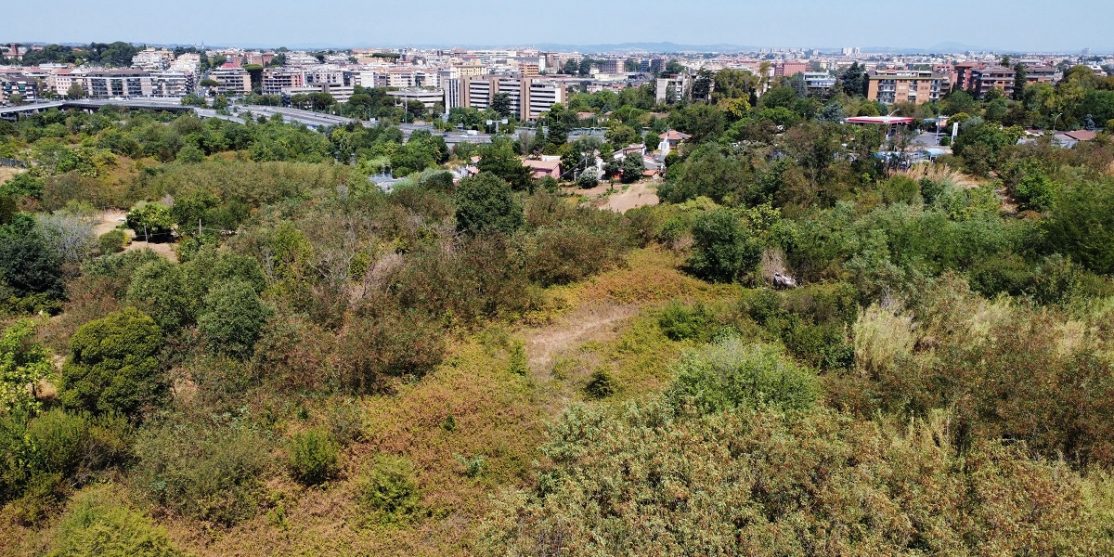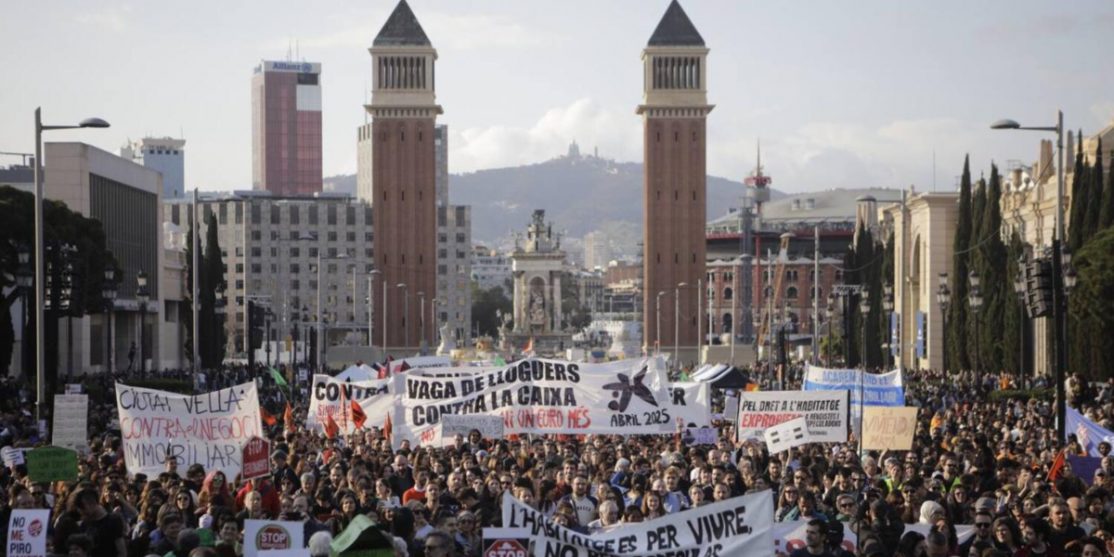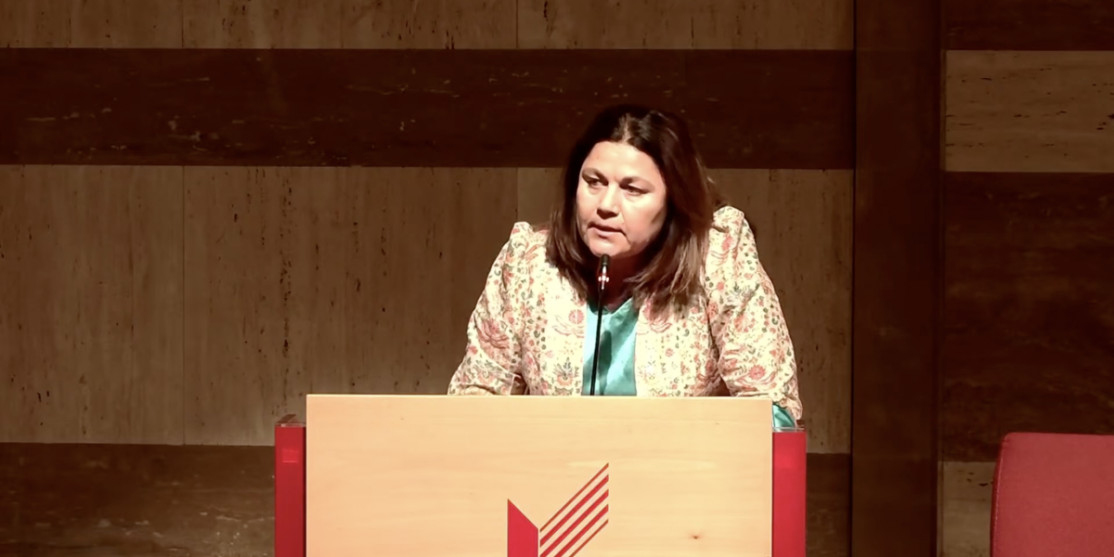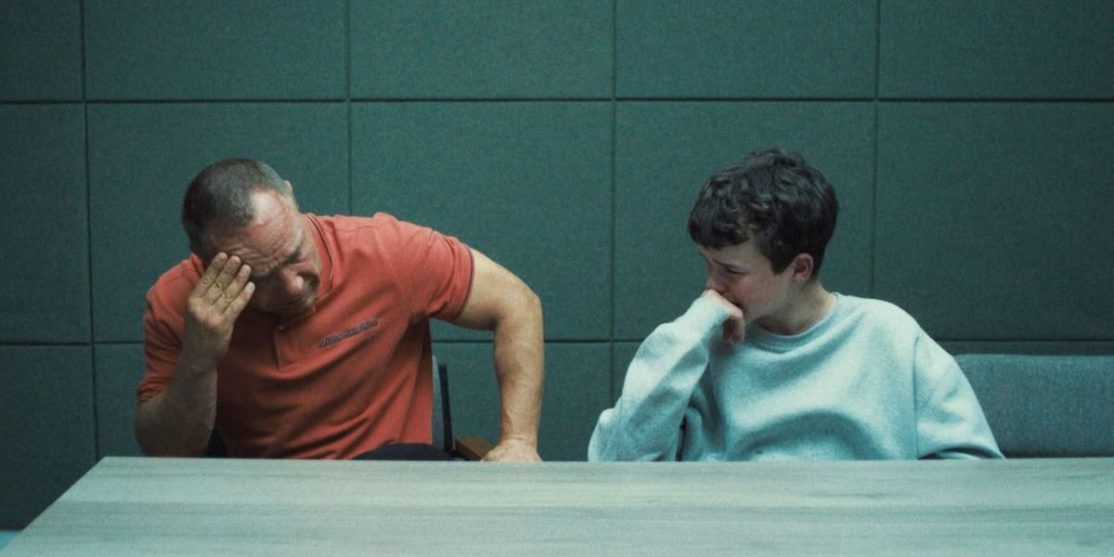EUROPA
A wonderful mess of resistances against austerity
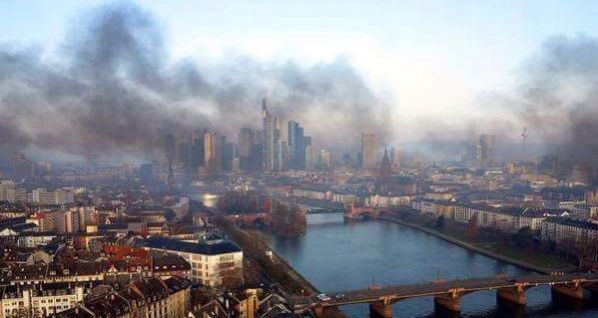
“Today this city is a wonderful mess of resistances against austerity!” There is no better definition than this one, to describe the powerful transnational day of the struggle of March 18th in Frankfurt, as was shouted from the truck of the anti-capitalist block during the demonstration. Blockupy was a great success, the day of March 18th, in all its complexity, in all its diversity, in all its differences broke the normality of the city of Frankfurt, the financial heart of Europe.
Let’s step back for a moment, the week began with Mario Draghi’s announcement: Greek banks will not be included in the quantitative easing program. No loans to those who do not follow the established rules and do not give the appropriate guarantees. And it continued with the announcement of the Eurogroup: the program of Greek reforms is not detailed enough, it must be reformulated in depth. No discounts for those who do not implement reforms based on the dogma of austerity: liberalization and privatization.
The negotiations are still going on: with the Greek Government under the German Government’s blackmail and Mario Draghi’s revolver drawn. 1.3 billion Euros were spent to build the new headquarters of the European Central Bank. But its inauguration day was not the celebration of the euro-technocracy, on the contrary its defeat. Thousands have reached the streets of Frankfurt, dozens of buses, cars, mini-buses, trains have succeeded, despite the controls, to arrive in the heart of the beast.
In contrast to what has been written, Blockupy in the past four years was not only the construction of a great event, but in Germany it has settled a widespread network of groups and organizations who have given themselves a common goal: to de-construct the image of the winning country, that defeats the crisis thanks to its austere economy without squandering, unlike the spendthrift and corrupt southern Europe.
Blockupy built a new political space for social movements and year after year it has gained political freedom in the streets of Frankfurt. We remember the first demonstration of 2012 well, then police blocked half of the buses and didn’t allow the manifestation to move freely. It is the collectives, the groups and the various local organizations of Frankfurt that have built March 18th day by day, connecting Blockupy to local struggles for the right to the city, against gentrification, for freedom of movement, against the high cost of living and workers’ right.
The blockades in the morning
The five blocks with different practices, though all conflicting and incompatible with the austerity and Troika, blocked the heart of the beast, making the control and militarization of the city collapse, transforming the urban space around the central bank in a free, uncontrollable, space, incompatible with the dictatorship of finance.
From five in the morning, thousands of people were moving through Frankfurt: the blue block, had already occupied the highway before the sun had risen, then through the parks it blocked the railway, while from the city columns of smoke were rising around the new Eurotower, and burning barricades appeared everywhere. The blue block, in an attempt to join the other blocks, was first divided into two and then closed in a kettle by the police. Over three hundred activists, mostly Italians, were kidnapped for four hours, carted away and released after an identification. But right away a support network appeared for the closed in bock: the inhabitants of the street threw water and cookies, let people in to use toilettes, while a demonstration of thousands of people tried to break through police block, demanding for everyone to be released.
The police repression was evident: water cannons, pepper spray, batons and tear gas, mass arrests… but the city is now totally blocked. Demos and blocks are everywhere, while the security system is going haywire. The green block breaks through the police chains arriving into the red zone, the orange block besieges the red zone, while the other blocks, mobile or not, surround the ECB, violated by some climbers that unrolled a banner on the tower with the words: “Capitalism kills!”.
Since the morning some of the practices put in place in different places of the city exceeded the action consensus defined in the public assemblies of Blockupy, but without compromising the other practices and the march itself, on a day that has been able to maintain a common space of struggle combining the differences. But probably the words of Naomi Klein say much more than many words and pictures used to celebrate or to condemn: “You are the true vandals, but you work on a much larger canvas, your vandalism is a planetary in scale, you do not set fire on cars, but you are setting the world on fire”
The demonstrations
The afternoon begins with the demonstration of the IG Metal, which along with several German and European unions (including the Italian Fiom), took the streets for Blockupy for the first time. The afternoon went on with a rally with many speakers, including activists, trade unionists and representatives of SYRIZA, Podemos and Die Linke. At five o’ clock the demonstration started, one of the largest organized by Blockupy. We were in the anticapitalist block, participated by networks coming from all over Europe, that followed the head of the demo composed by a transnational delegation and by the women of blockupy, inside the march of the thirty thousand anti-austerity protesters coming from all over Europe. In the demo there were thousands of activists, but also many workers, social care workers on strike, Amazon precarious workers, radical unions and students.
In the manifestation all the struggles that in recent years have challenged the government of the crisis and the European neoliberal regime were present, in Frankfurt they have found a new space for interconnection, with a new intensity and quality. This is the most interesting aspect of Frankfurt – not so much the dimension of the counter-summit, which was clearly present in the dynamics of the day – but the process of connecting transnational struggles against austerity, in the new neoliberal laboratory that Europe has become.
The self-celebration of the financial power has completely collapsed: employees arrived to the headquarters of the Central Bank escorted, Draghi arrived with a helicopter, and the inauguration became a little speech in front of a few dozen people. But the block has been of the whole city, of the production and of the mobility: for the whole day the functioning of the complex machine of capitalist accumulation was thrown into crisis, giving new significance to the urban space.
After the 18th of March: for Blockupy, beyond Blockupy!
We have come to Blockupy with the campaign Strike ECB, started from the experience of the local laboratories of the social strike, prepared by the European discussions that took place during the strike meetings. This means that we have participated the 18th of March based on the concrete struggles organised in the last months in Italy, against precariousness of life and work. That’s why during the demonstration we decided to participate with our strikers in the block of the German strike solidarity network, with some Ver.di unionists, Amazon strikers, Frankfurt’s social care workers on struggle. A slogan united us, simple but decisive: “let’s unite, social strike!”
After 18th March this is the challenge: to extend, organize, give strength to the struggles and connect the experiments of new social organization, self-organisation, mutualism, struggles against austerity, precarity and exploitation. That’s why the meeting on March 19th – “Towards a social and transnational strike?” – has been a decisive date for takIng a new step forward for the possibility of building a transnational strike. Nearly a hundred people, including trade unions, collectives of precarious workers, students and migrants, from many European countries (England, Sweden, France, Germany, Italy, Poland, Portugal, Greece …), discussed the actual meaning of fighting for workers rights and what the possibilities for the construction of coordinated struggles at a European level are.
A further and greater moment of discussion has been set for September, and the next international meetings shall also be used in order to continue, to think, and to organize a common day of actions and mobilizations.
We challenged them, side by side, in the chains and free in the streets, in the blocks and in the squares: from today, yet with more determination, patience, attention and passion, we must look to the continuity, to build a process of radical transformation of the world in which we live. That is exactly what the European space of discussion on the possibility of organising a social and transnational strike wants to do: connect local struggles on a transnational level, to give them more strength and take the word victory back on our side!

